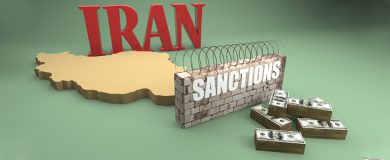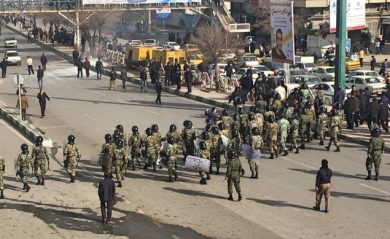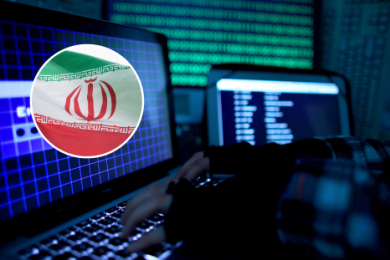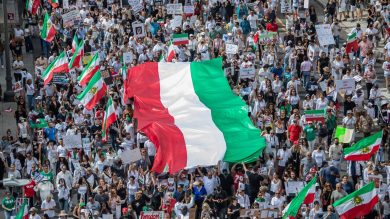Sanctions have long been a tool used by the international community to pressure governments accused of human rights abuses, corruption, and destabilizing activities. In the case of Iran, sanctions are primarily aimed at curbing the influence of the Islamic Revolutionary Guard Corps (IRGC), limiting the regime’s ability to fund its oppressive apparatus, and pressuring leaders to improve human rights and halt nuclear proliferation. However, while sanctions target the regime, their ripple effects often impact Iranian activists and ordinary citizens. This raises a crucial question: Do sanctions empower or harm Iranian activists striving for freedom and justice?
This article examines the dual impact of sanctions on Iran’s economy, society, and resistance movements, analyzing whether these economic measures strengthen grassroots activism or hinder the fight for democracy and human rights.
1. The Goals and Mechanisms of Sanctions on Iran
A. Types of Sanctions
1. Economic Sanctions: Restrictions on trade, banking, and access to global financial markets, particularly targeting oil exports, which are the backbone of Iran’s economy.
2. Targeted Sanctions: Measures against specific individuals, entities, and institutions associated with human rights violations, the IRGC, and nuclear development.
3. Secondary Sanctions: Penalize foreign companies and governments for conducting business with sanctioned Iranian entities.
B. Objectives of Sanctions
• To weaken the Iranian regime’s ability to fund oppression and destabilizing activities.
• To pressure the government into negotiating on nuclear proliferation and human rights issues.
• To signal international condemnation of systemic abuses and support for civil society.
2. The Economic and Social Impact of Sanctions
A. Economic Hardship for Ordinary Citizens
• Rising Inflation: Sanctions targeting Iran’s central banking system have led to currency devaluation and skyrocketing inflation, making essential goods unaffordable.
• Unemployment and Poverty: Restrictions on trade and industry have caused widespread unemployment and increased poverty levels, disproportionately affecting vulnerable groups.
• Healthcare Crisis: Sanctions complicate the import of medical supplies, exacerbating public health challenges and limiting access to life-saving treatments.
B. Struggles for Activists
• Diverting Focus: Economic struggles often shift public focus from activism to survival, weakening grassroots movements and participation in protests.
• Limited Resources: Sanctions indirectly restrict the resources available to activists, such as funding, communication tools, and organizational support.
• Increased Repression: The regime uses sanctions as a scapegoat, framing activists as collaborators with foreign powers and justifying crackdowns.
3. How Sanctions Empower Iranian Activists
A. Weakening the Regime’s Financial Networks
• Disrupting the IRGC: Sanctions targeting the IRGC’s economic empire limit its ability to fund internal repression and regional destabilization.
• Reducing Regime Resources: With less revenue from oil and trade, the regime struggles to sustain its security forces, leaving room for activism to grow.
B. Global Solidarity and Support
• Amplifying the Movement’s Voice: Sanctions signal international recognition of the regime’s abuses and align global communities with Iranian resistance efforts.
• Targeted Sanctions on Abusers: Measures against human rights violators within the regime reinforce activists’ demands for accountability and justice.
C. Encouraging Grassroots Innovation
• Digital Activism: Sanctions on state-controlled platforms push activists to adopt decentralized and creative solutions to communicate and organize.
• Underground Economy: Activists leverage informal networks to sustain their movements, fostering solidarity and resilience.
4. The Negative Consequences of Sanctions on Activism
A. Worsening Public Discontent
• Economic Burdens: The regime uses sanctions as a propaganda tool, blaming economic hardships on foreign interference rather than domestic corruption and mismanagement.
• Eroding Support for Activism: As hardships increase, some citizens view protests as futile or counterproductive, reducing public participation in resistance movements.
B. Strengthening the Regime’s Narrative
• Exploiting Nationalism: The regime frames sanctions as acts of aggression, rallying nationalist sentiments and shifting blame from internal failures to external enemies.
• Criminalizing Activism: Authorities use sanctions as an excuse to crack down on activists, accusing them of aligning with foreign powers.
C. Barriers to International Support
• Restricted Funding: Sanctions complicate efforts to channel financial and material support to grassroots organizations and civil society groups.
• Isolated Digital Space: Restrictions on technology exports limit access to secure communication tools, leaving activists vulnerable to surveillance.
5. Activists’ Strategies to Overcome Challenges
A. Adapting to Economic Realities
• Community Support Networks: Activists create local support systems to provide resources and mutual aid, alleviating some economic pressures.
• Alternative Funding: Crowdfunding and diaspora networks help sustain resistance efforts, bypassing formal financial restrictions.
B. Leveraging Digital Tools
• VPNs and Encryption: Activists use VPNs and encrypted messaging apps to circumvent censorship and maintain communication despite sanctions.
• Social Media Campaigns: Platforms like Twitter, Instagram, and Telegram amplify activists’ voices and draw international attention to their struggles.
C. Building International Alliances
• Diaspora Advocacy: Iranian diaspora communities play a critical role in lobbying foreign governments and raising awareness about the impact of sanctions.
• Global Solidarity Movements: Collaborations with international human rights organizations help amplify Iranian activists’ demands.
6. The Role of the Global Community
A. Balancing Sanctions with Humanitarian Exemptions
• Ensuring Essential Goods: Sanctions should include clear exemptions for food, medicine, and humanitarian supplies to minimize harm to ordinary citizens.
• Facilitating Humanitarian Aid: Streamlining processes for NGOs to operate in sanctioned environments can mitigate the impact on vulnerable populations.
B. Supporting Digital Freedom
• Access to Technology: Provide activists with secure communication tools and training to protect against surveillance and censorship.
• Anti-Censorship Tools: Fund and distribute tools like VPNs and encrypted platforms to help activists bypass regime-imposed digital restrictions.
C. Targeting the Right Entities
• Focus on Regime Elites: Sanctions should target individuals and entities directly responsible for human rights abuses and corruption, avoiding blanket measures that harm civilians.
• Financial Oversight: Monitor and restrict IRGC-affiliated financial networks to limit their ability to fund repression.
7. Success Stories of Sanctions and Activist Resistance
A. The Green Movement (2009)
• Sanctions amplified the international spotlight on Iran’s election protests, strengthening activists’ calls for democratic reform.
B. Protests Following Mahsa Amini’s Death (2022)
• Sanctions against the morality police and officials involved in crackdowns demonstrated global solidarity with Iranian women leading the resistance.
C. International Advocacy Campaigns
• The coordination between Iranian activists and international organizations has resulted in effective lobbying for targeted sanctions and global awareness.
8. Rethinking Sanctions: Recommendations for the Future
A. Prioritize Targeted Sanctions
• Avoid broad measures that disproportionately harm civilians, focusing instead on the regime’s elites, IRGC entities, and oppressive institutions.
B. Strengthen Grassroots Support
• Allocate resources to NGOs and civil society groups to sustain activism and amplify Iranian voices.
C. Ensure Accountability
• Use sanctions to pressure the regime into transparency and accountability for human rights abuses.
D. Combine Sanctions with Diplomatic Efforts
• Pair economic measures with diplomatic initiatives to support activists’ demands for systemic reform and justice.
Conclusion
Sanctions are a double-edged sword in Iran’s fight for freedom, simultaneously pressuring the regime and exacerbating hardships for ordinary citizens and activists. While targeted sanctions can weaken the IRGC’s financial networks and signal global solidarity, broad economic measures risk undermining grassroots resistance. To truly empower Iranian activists, the international community must adopt a balanced approach, combining targeted sanctions, humanitarian exemptions, and direct support for civil society. By aligning sanctions with the needs of the resistance movement, the world can help pave the way for a freer, more just Iran.
Join Our Newsletter!
Stay informed with the latest updates, news, and ways to take action in the fight for justice and global security. Sign up now to get updates delivered straight to your inbox!





